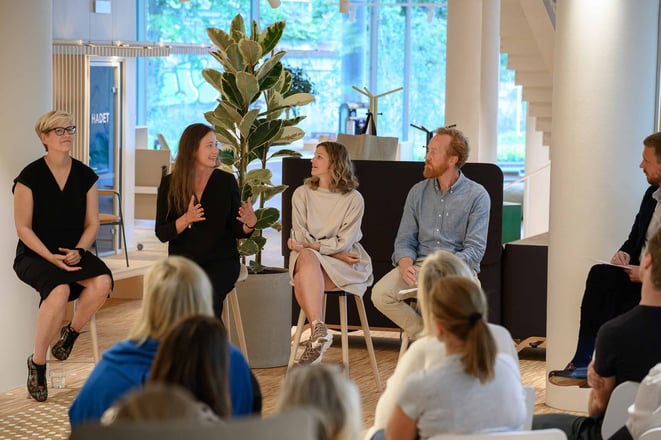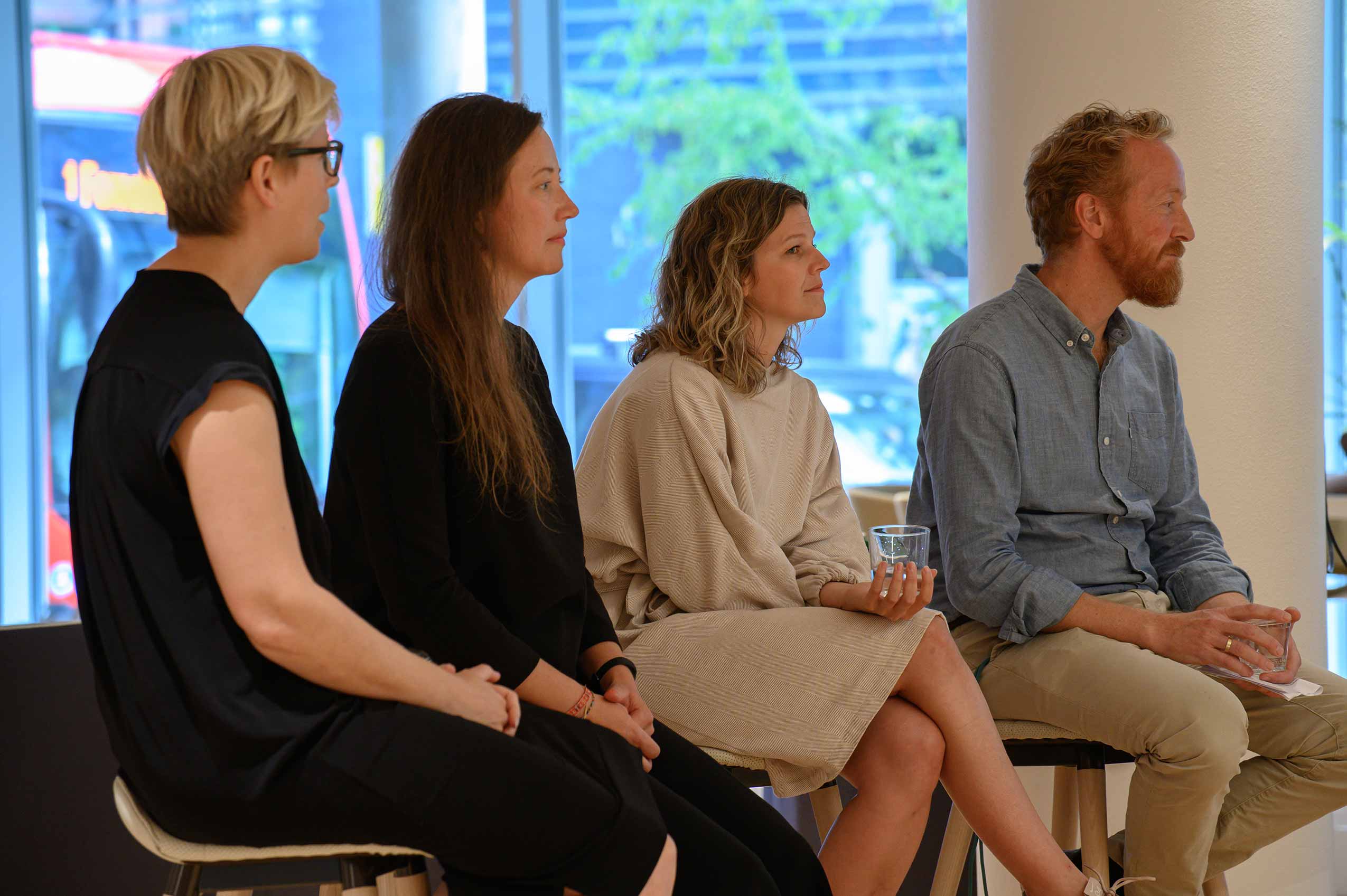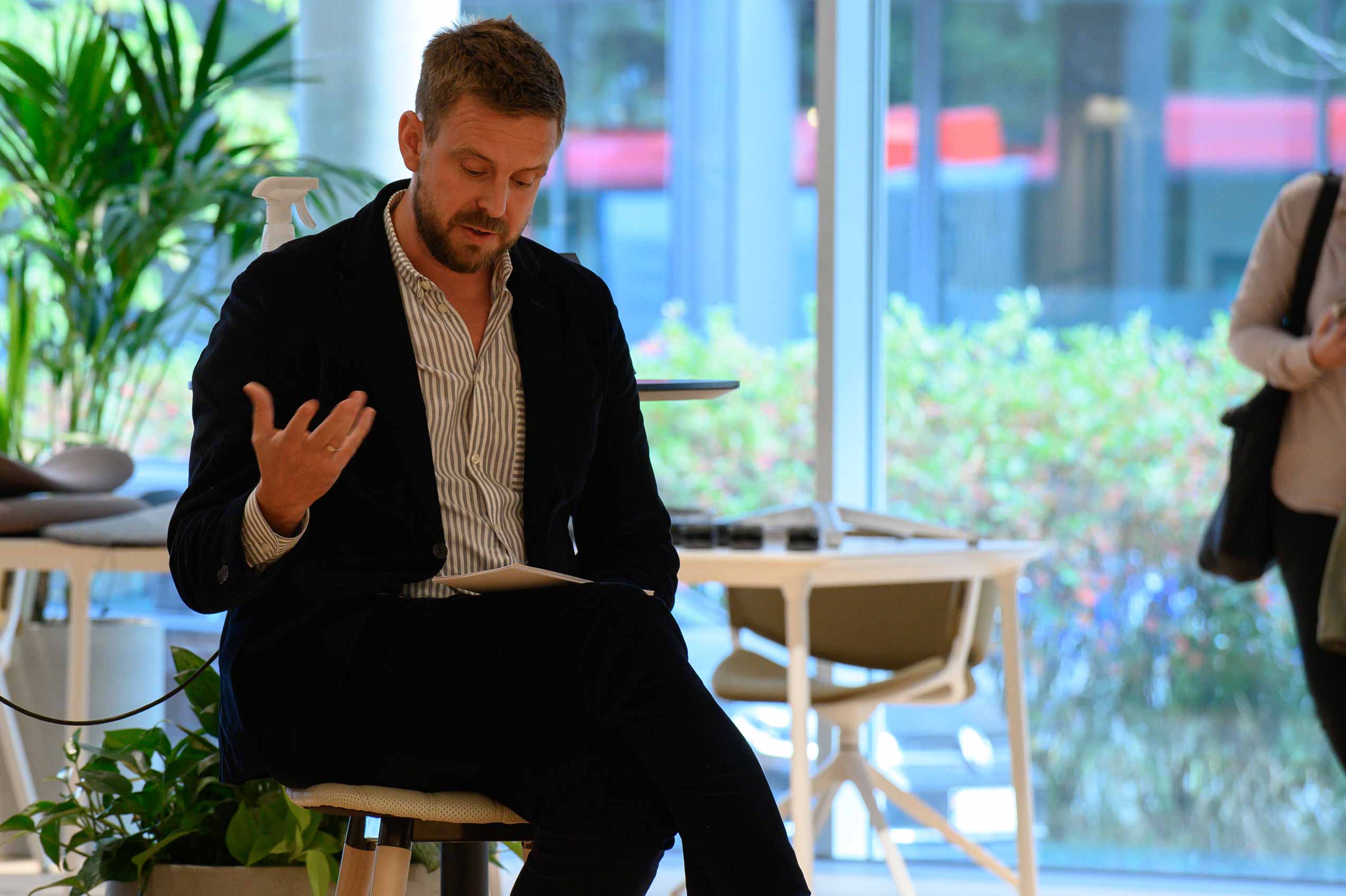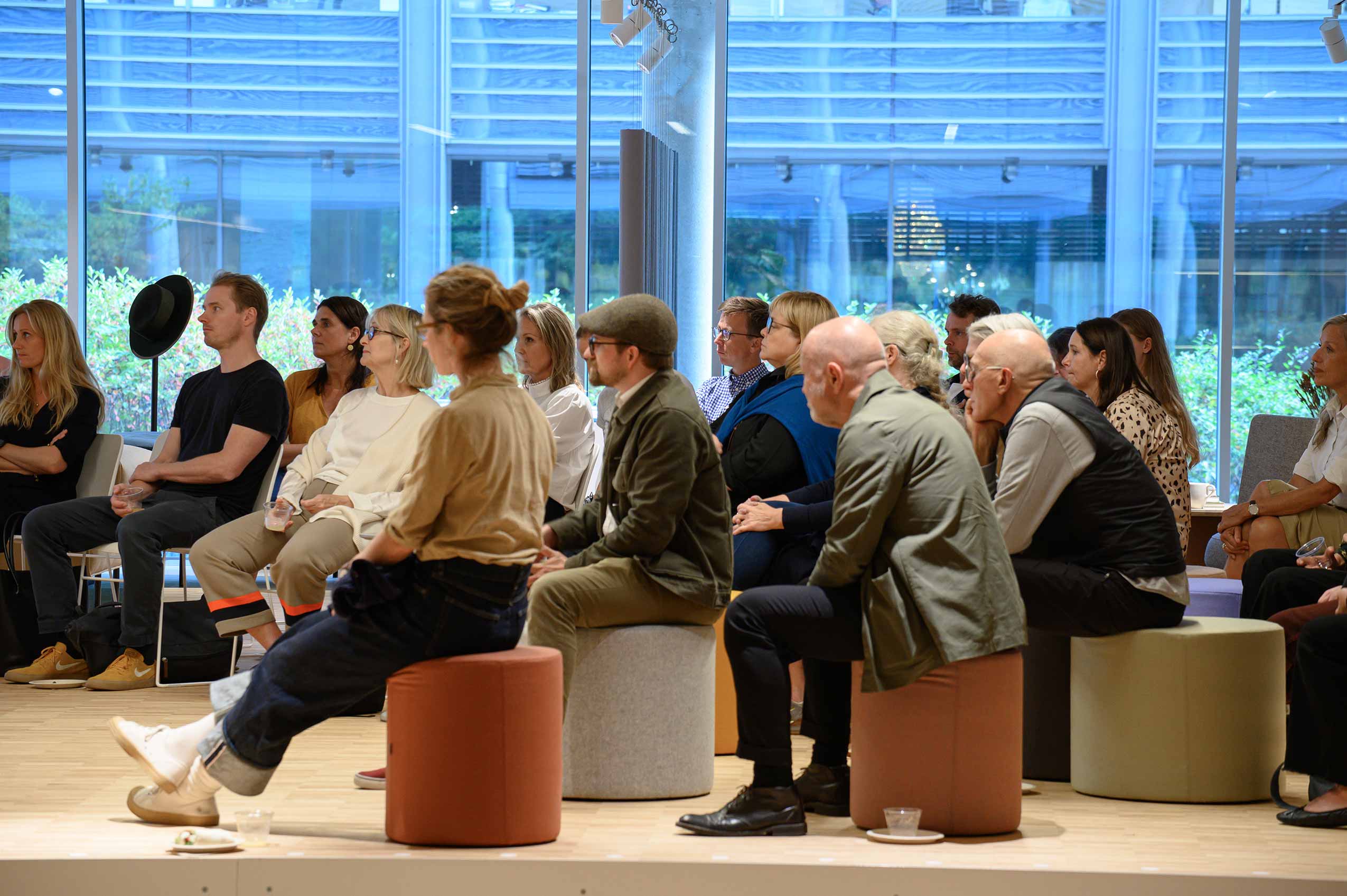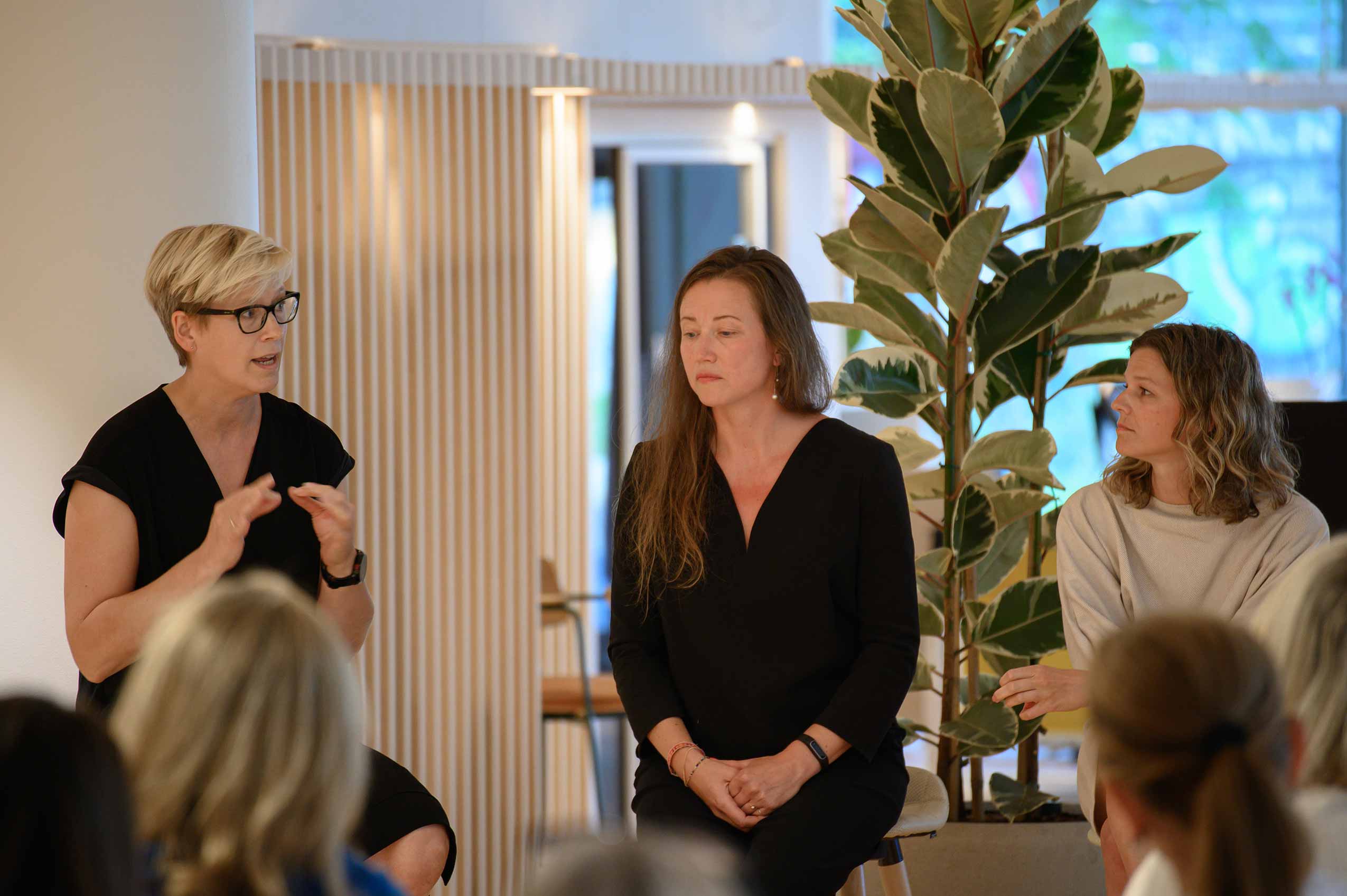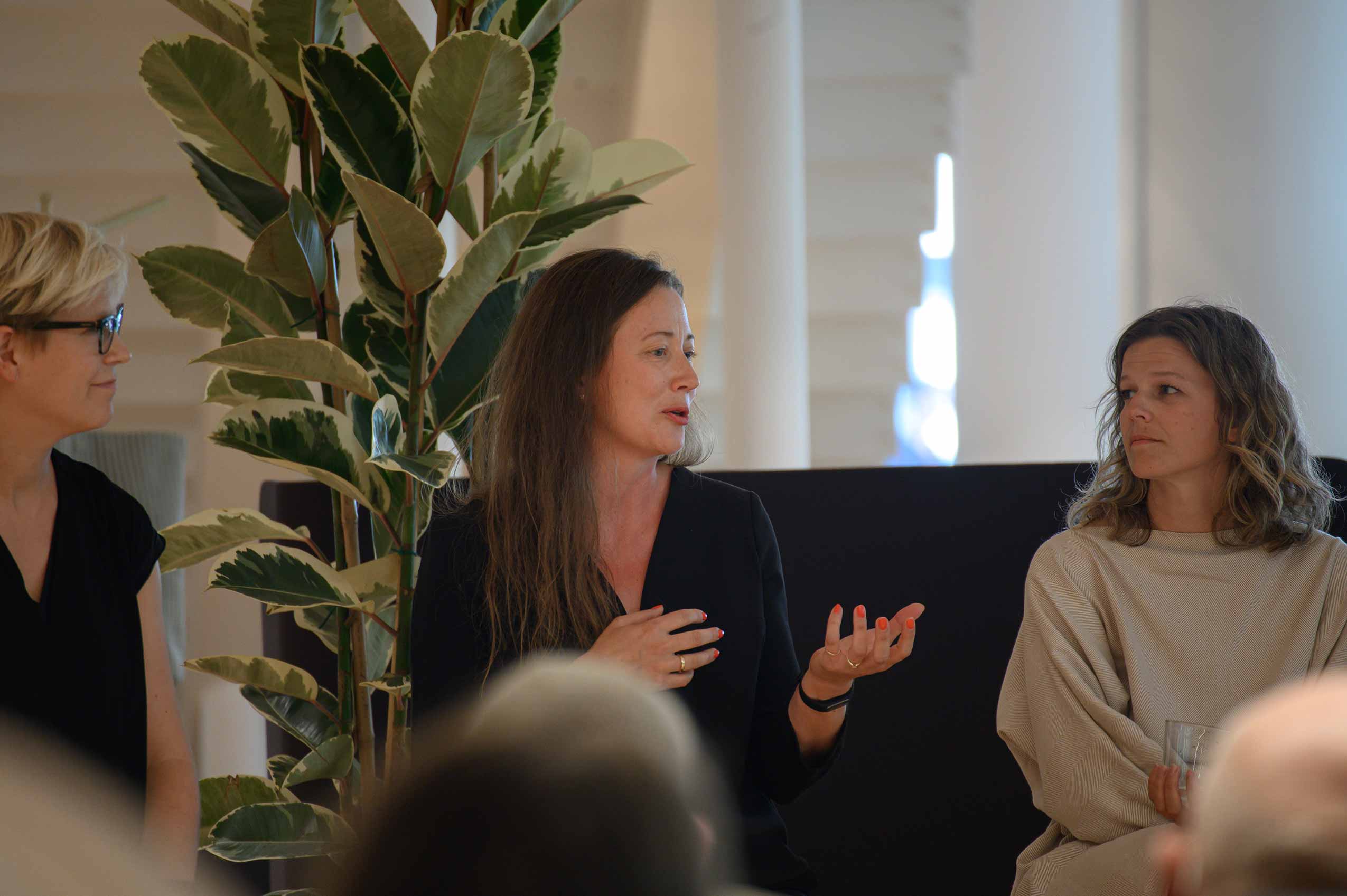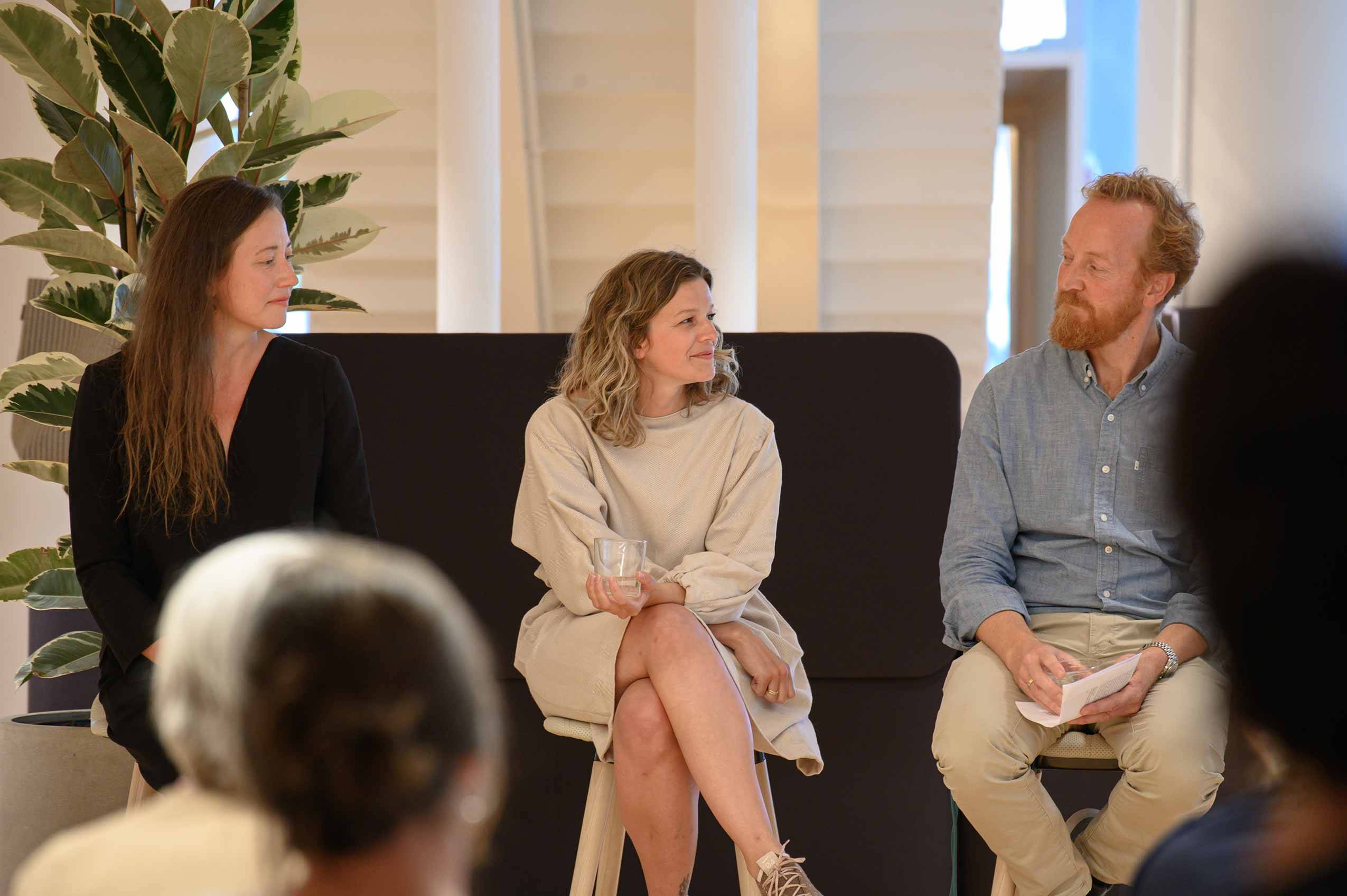After a two-year design process, the official opening of the new Flokk HQ in 2020 received little fanfare, but with the gradual relaxation of COVID restrictions, last week saw the first event to be held at our stunning new location, with attendees eager to pay their first visit to our flagship showroom.
Our esteemed guests were treated to an engaging discussion hosted by Jonas Stokke, a Designer, Entrepreneur, and Designer’s Saturday Chairman. A range of panelists representing both the product design and architecture industries joined him, with the overarching question of the night being ”What is the role of architects and designers in the time of climate change?"
Design
Jonas kicked off the discussion by introducing the role of designers as problem solvers, their unique position as influencers of change, and the challenge of evolving their approach to achieve a reduction in the impact the design industry has on the environment.
The first to tackle the question was Flokk SVP Christian Lodgaard, who explained that as manufacturers, first and foremost it’s important to do the research on your own activities to find where you can make the most difference.
Christian; “First of all you need to know where your emissions are and then you can decide on how you work with the whole value chain. For us, we know that more than 90% of our emissions are from the products, and from the materials we use. This is where we decide on the materials we use and the production methods…We also need to design furniture that is so iconic people will want to keep it. You have to go for a long lifecycle and a low carbon footprint.”
Representing the textile industry we had Trine Neimann-Platz, VP of Strategy and Sustainability in Norway for Kvadrat, who explained the recent advances they have made to really bring fabrics forward as a sustainable solution.
Trine: “The textile industry, when you think about fashion, has a poor reputation But we are now working on textiles with a long lifespan… we need to make the consumer understand that they can use the textile for a long time and we try increasingly now to upcycle our materials.”
This concept is evident in Really, a new fabric from Kvadrat engineered from end-of-life cotton and wool sourced from the fashion industry and industrial laundries combined with Kvadrat cut-offs, creating a new fabric following circular design principles.
Architecture
With recent successes such as the first carbon-negative office building in Norway, Snøhetta are pioneers of sustainable architecture. With so many success stories, it was great to hear their valuable opinion on the role architecture itself plays in tackling climate change.
Tonje Frydenlund, Director Acquisition & Business Development Nordics at Snøhetta was asked about the particular challenge architects face, in reducing their environmental impact. She spoke about the ambitions of Snøhetta to continue to push carbon-negative building projects, and the need to work with their clients on the journey, in order for it to be successful.
Tanje: “In Snøhetta, we have set a goal that we in 10 years should deliver projects that are climate negative. We have to understand our whole value chain… and see how we can influence our customers to, for example, plant a whole woodland area because we have consumed trees during the process. When we start a project, we have to have a common understanding with the customer on what we want to accomplish.”
The final panelist was former Architect Eivor Vik, who now works in product development at Made by Mad. Having experienced both worlds of design, she was asked about the differences between product design and architecture when it comes to environmental considerations. She spoke at length about the scientific nature of product development, especially when it comes to materials, and the trial and error process of testing materials in the search for sustainable yet practical solutions, something less common in architecture.
Eivor: “We always have to get as much information as possible, assembling cross-functional teams who find the best solution. We become a bit like scientists… We know there is a lot of potential. We need time and space to try and fail”
Concluding the talk, each panelist agreed that collaboration and communication were the keys to successfully tackling climate change when it comes to design, will less emphasis on owning designs and more on creating actionable solutions for everyone to use to help reduce our impact on the environment.
Many thanks to our panelists who took part in the talk, and to everyone who attended.
For information on upcoming events in our Oslo showroom, be sure to keep updated via our showroom page here, where you can also find information about events at our other showrooms around the world.
